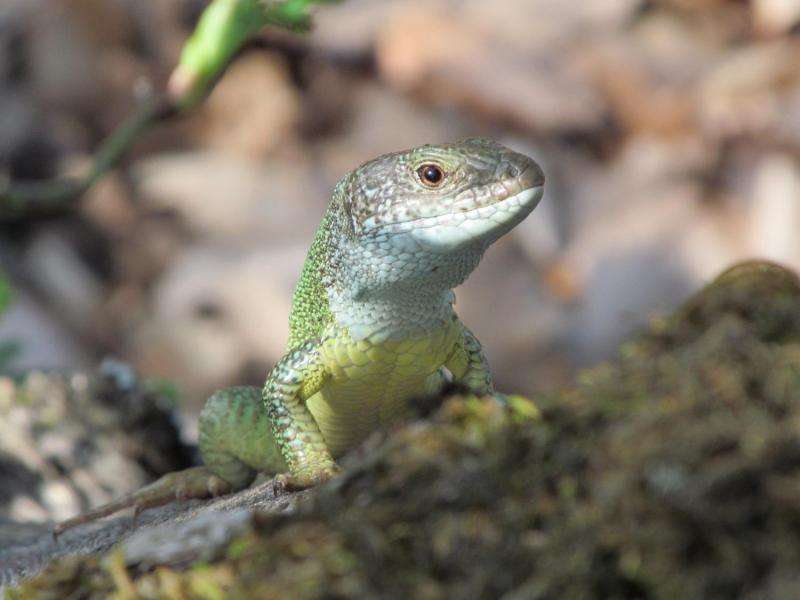October 8, 2015 report
Adult sex ratio linked to gender chromosomes

Bob Yirka
news contributor

(Â鶹ÒùÔº)—A team of researchers with members from institutions in Hungary, the U.S. and the U.K. has found a link between the adult sex ratio (ASR) and gender chromosome differences. In their paper published in the journal Nature, they describe how they used data from a large number of tetrapods to find patterns that revealed male or female biases which suggested a link between such biases and ASR.
The ASR is defined as the proportion of adult males to females in a given species. Some animals produce on average more of one or the other and scientists have struggled to understand how that process works. To learn more, the team with this effort gathered data from 344 specimens in the tetrapod species (those with four limbs) which included 117 familes and performed a phylogenetic analysis on them, noting specifically their sex (gender) chromosomes—which are of course, those that determine an offspring's gender. Mammals, including us humans, have X and Y chromosomes, whereas some other species have Z and W.
In looking at the data they had obtained, the team found that when a female of a species has two different gender chromosomes, the result is often more males than females being produced. But, when males of a given species have two different gender chromosomes, the result is generally more females than males being produced. The researchers still do not know why these imbalances occur but advise that further studies be conducted to find out. They suggest it might be because whichever gender has different gender chromosomes has less of a chance of surviving to birth—or less of a chance of surviving to adulthood—for whatever reasons.
Understanding the ASR, the team points out is important because it can have such a profound impact on behavior, population changes and overall ecology. In humans, for example, a skewed ASR in a group has sometimes led to rape, violence and increased rates of infidelity. In other species, ASR can be a determinant for mating rituals and partner numbers. The researchers suggest that future efforts might need to focus on other species, such as fish, to gain a better understanding of how the underlying process truly works.
Written for you by our author —this article is the result of careful human work. We rely on readers like you to keep independent science journalism alive. If this reporting matters to you, please consider a (especially monthly). You'll get an ad-free account as a thank-you.
More information: The genetic sex-determination system predicts adult sex ratios in tetrapods, Nature (2015)
Abstract
The adult sex ratio (ASR) has critical effects on behaviour, ecology and population dynamics, but the causes of variation in ASRs are unclear. Here we assess whether the type of genetic sex determination influences the ASR using data from 344 species in 117 families of tetrapods. We show that taxa with female heterogamety have a significantly more male-biased ASR (proportion of males: 0.55 ± 0.01 (mean ± s.e.m.)) than taxa with male heterogamety (0.43 ± 0.01). The genetic sex-determination system explains 24% of interspecific variation in ASRs in amphibians and 36% in reptiles. We consider several genetic factors that could contribute to this pattern, including meiotic drive and sex-linked deleterious mutations, but further work is needed to quantify their effects. Regardless of the mechanism, the effects of the genetic sex-determination system on the adult sex ratio are likely to have profound effects on the demography and social behaviour of tetrapods.
Journal information: Nature
© 2015 Â鶹ÒùÔº



















